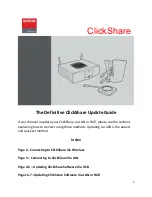
3-38
System 3
RX7 Stimulator Base Station
The front panel VFD screen reports detailed information about the status of the
system. The display includes two lines. The top line reports the system mode, Run!
or Idle, and displays heading labels for the second line. The second line reports the
user’s choice of status indicators for each DSP followed by an aggregate value.
The user can cycle through the various status indicators using the Mode button to
the left of the display. Push and release the button to change the display or push
and hold the button for one second then release to automatically cycle through each
of the display options. The VFD screen may also report system status such as
booting status (Booting DSP) or alert the user when the device's microcode needs
to be reprogrammed (Firmware Blank).
Status
Indicators
Cyc:
cycle
usage
Ovr:
processor cycle overages
Bus%:
percentage of internal device's bus capacity used
I/O%:
percentage of data transfer capacity used
Important!
The status lights will flash (~3 times a second) to alert the user when a device
goes over the cycle usage limit, even if only for a particular cycle. This helps to
identify periodic overages caused by components in time slices.
Fiber
Optic
Output
Port
(Stimulator)
The output port, labeled Stimulator, can be used to transfer microstimulation
waveforms to the MS16/MS4 Stimulus Isolator and/or to control its digital output.
See the “MS4/MS16 Stimulus Isolator” on page 7-3.
Important!
This fiber optic port is disabled if the sampling rate of the system is set to a value
greater than ~25 kHz.
Fiber
Optic
Input
Ports
(Amp
‐
A
and
Amp
‐
B)
The RX7 base station can acquire digitized signals from a Medusa preamplifier over
a fiber optic cable. This provides loss-less signal acquisition between the amplifier
and the base station. Up to two fiber optic ports are provided to support
simultaneous acquisition from up to two preamplifiers. Each port can input up to 16
channels at a maximum sampling rate of ~25 kHz. The fiber optic ports provide
oversampling. See “Fiber Oversampling”, below for more information.
The fiber optic ports can be used with any of the Medusa preamplifiers including the
RA16PA, RA4PA, or RA8GA. The channel numbers for each port begin at a fixed
offset regardless of the number of channels available on the connected device.
Channels are numbered as follows:
Amp-A
1 – 16
Amp-B
17 – 32
Fiber
Oversampling
(acquisition
only)
The fiber optic cable that carries the signals to the fiber optic input ports on the
RX7 has a transfer rate limitation of 6.25 Mbits/s. With 16 channels of data and 16
bits per sample, this limitation translates to a maximum sampling rate of ~25 kHz.




























